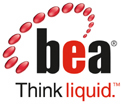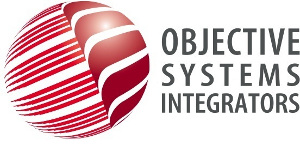Background
NetExpert is considered an OSS, used in managing wireline and wireless networks and services. [3]
NetExpert is a scalable and distributable architecture that supports flexible configuration while maintaining individual component independence. Its application packages address many areas of communication services management, including fault, performance, reporting, activation, IP services, and others. These can be further tailored to individual customer environments and management requirements. [3]
This framework consists of a set of integrated software modules and graphical user interface (GUI) development tools to enable the creation and deployment of complex management solutions. The object-oriented architecture of the NetExpert framework provides the building blocks to implement operations support and management systems using high-level tools rather than low-level programming languages. [4]
The NetExpert framework is founded on open systems and object-oriented methodology. NetExpert supports different standards, transmission protocols, and equipment data models. NetExpert is based on the Telecommunications Management Network architecture created by the Telecommunications Standardization Sector of the International Telecommunication Union. It supports the development and deployment of applications for the main TMN management areas—fault, configuration, accounting, performance, and security—and the implementation of layered management architectures. In addition, the NetExpert framework employs expert rules and policies that replace complex programming languages and enable network analysts to model desired system behaviors by using GUI-based rule editors. [4]
Middleware in the context of distributed applications is software that provides services beyond those provided by the operating system to enable the various components of a distributed system to communicate and manage data. Middleware supports and simplifies complex distributed applications. It includes web servers, application servers, messaging and similar tools that support application development and delivery. Middleware is especially integral to modern information technology based on XML, SOAP, Web services, and service-oriented architecture.

BEA Systems, Inc. was a company that specialized in enterprise infrastructure software products, which was wholly acquired by Oracle Corporation on April 29, 2008.

A decision support system (DSS) is an information system that supports business or organizational decision-making activities. DSSs serve the management, operations and planning levels of an organization and help people make decisions about problems that may be rapidly changing and not easily specified in advance—i.e. unstructured and semi-structured decision problems. Decision support systems can be either fully computerized or human-powered, or a combination of both.
Enterprise application integration (EAI) is the use of software and computer systems' architectural principles to integrate a set of enterprise computer applications.
Element management is concerned with managing network elements on the network element management layer (NEL) of the TMN . An element management system (EMS) manages one or more of a specific type of telecommunications network elements (NE).
PowerBuilder is an integrated development environment owned by SAP since the acquisition of Sybase in 2010. On July 5, 2016, SAP and Appeon entered into an agreement whereby Appeon, an independent company, would be responsible for developing, selling, and supporting PowerBuilder.
IBM Spectrum Protect is a data protection platform that gives enterprises a single point of control and administration for backup and recovery. It is the flagship product in the IBM Spectrum Protect family.
A service delivery platform (SDP) is a set of components that provides a service(s) delivery architecture for a type of service delivered to consumer, whether it be a customer or other system. Although it is commonly used in the context of telecommunications, it can apply to any system that provides a service. Although the TM Forum (TMF) is working on defining specifications in this area, there is no standard definition of SDP in industry and different players define its components, breadth, and depth in slightly different ways.
The Spring Framework is an application framework and inversion of control container for the Java platform. The framework's core features can be used by any Java application, but there are extensions for building web applications on top of the Java EE platform. Although the framework does not impose any specific programming model, it has become popular in the Java community as an addition to the Enterprise JavaBeans (EJB) model. The Spring Framework is open source.
OpenSAF is an open-source service-orchestration system for automating computer application deployment, scaling, and management. OpenSAF is consistent with, and expands upon, Service Availability Forum (SAF) and SCOPE Alliance standards.
Frameworx is an enterprise architecture framework geared towards communications service providers.
An element management system (EMS) consists of systems and applications for managing network elements (NE) on the network element-management layer (NEL) of the Telecommunications Management Network (TMN) model.

Objective Systems Integrators (OSI) is a multinational computer technology corporation that develops, manufactures, licenses, and supports software products which automate the monitoring, control, delivery, and management of services for multinational corporation service providers including:
Avaya Unified Communications Management in computer networking is the name of a collection of GUI software programs from Avaya utilizing a service-oriented architecture (SOA) that serves as a foundation for unifying configuration and monitoring of Avaya Unified Communications Servers and data systems.
Global Information Network Architecture (GINA) is a software framework that bridges the symbolic and the connectionist representations of the world through executable conceptual models. Declarative contextual, causal, behavioral, and adaptive models for computational inferencing, analysis, and control can run and adapt based on the changing context of data-in-motion. This patented software technology enables the processing and the orchestration of context and causality for counterfactual analysis, decision support, and learning machines – addressing key roadblocks in the continued evolution of current AI, interoperability, and system-of-systems solutions.
Operations support systems (OSS), operational support systems in British usage, or Operation System (OpS) in NTT, are computer systems used by telecommunications service providers to manage their networks. They support management functions such as network inventory, service provisioning, network configuration and fault management.
Middleware is a type of computer software that provides services to software applications beyond those available from the operating system. It can be described as "software glue".
Network functions virtualization (NFV) is a network architecture concept that leverages the IT virtualization technologies to virtualize entire classes of network node functions into building blocks that may connect, or chain together, to create and deliver communication services.
This page is based on this
Wikipedia article Text is available under the
CC BY-SA 4.0 license; additional terms may apply.
Images, videos and audio are available under their respective licenses.


